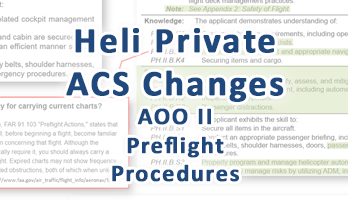Effective May 31st, 2024 the FAA Helicopter Private, Commercial, Instrument & Flight Instructor PTS will be replaced by new FAA Helicopter ACS (Airman Certification Standards) versions. For many helicopter pilots ACS is completely new and many are wondering “What is the ACS?” and “What changes are in the new helicopter ACS?” The ACS is essentially an enhanced PTS but there is so much more to it. To get a detailed overview of all the major changes to ACS, check out the full details in this Heli ACS video series. Also you can read an abbreviated summary on this webpage.
If you want to follow along with the changes, grab the free PDF from the FAA’s ACS webpage or purchase the paper versions (Amazon affiliate links to help support HTV) below. Paper versions also come with the ACS Companion Guide for Pilots (FAA-G-ACS-2).
New (2024) Helicopter Airman Certification Standards (ACS): A General Overview
ACS History
The journey to revamp the Airman Certification Standards (ACS) began in 2011 with a focus on aligning knowledge tests with the knowledge requirements of ‘real pilots’. This led to the realization that both knowledge and practical tests needed an overhaul. After industry and public comment, prototyping thre was testing at flight schools in Orlando and Seattle followed, culminating in the release of the Airplane Private Pilot ACS in 2016. Subsequently, the ACS expanded to include other certificates and ratings, with the Helicopter ACS development starting in 2018 and its release in April 2024. The new Helicopter ACS for PVT, COM, INST & CFI go into effect May 31st , 2024. Many other ACS were created (powered-lift) or updated, see the full list at the FAA’s ACS listing webpage.
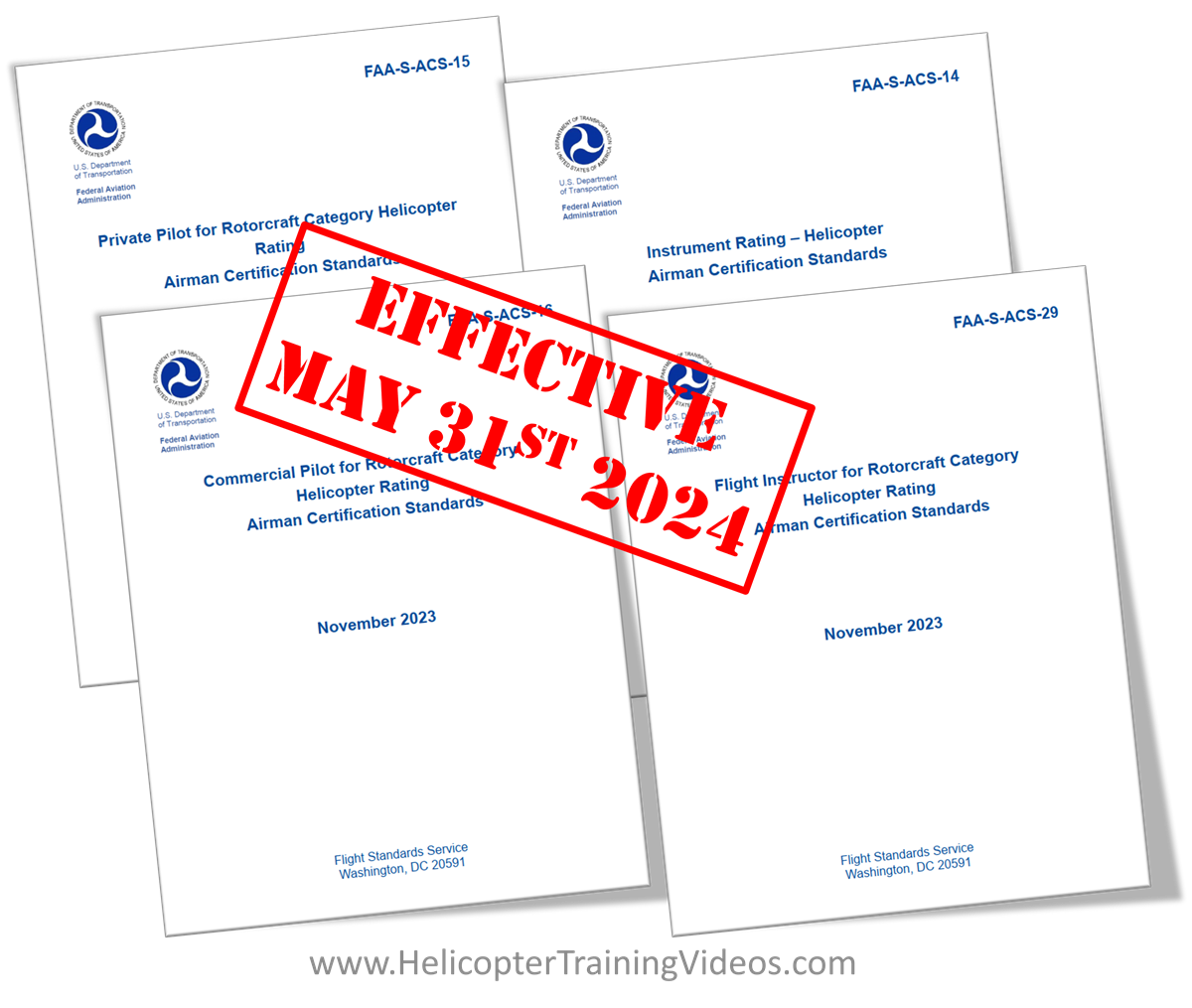
ACS Goals
The overarching goal of the ACS is to combine required pilot standards into what a pilot should Know, Consider, and Do in both knowledge and practical tests, supported by updated references. Special emphasis areas, risk management and Aeronautical Decision Making (ADM) items will be combined into task-specific elements. Additionally, the ACS aims to eliminate the bloat of the Practical Test Standards (PTS) and standardize content, moving lengthy notes to three standardized ACS appendices and a new ACS Companion Guide for Pilots document.
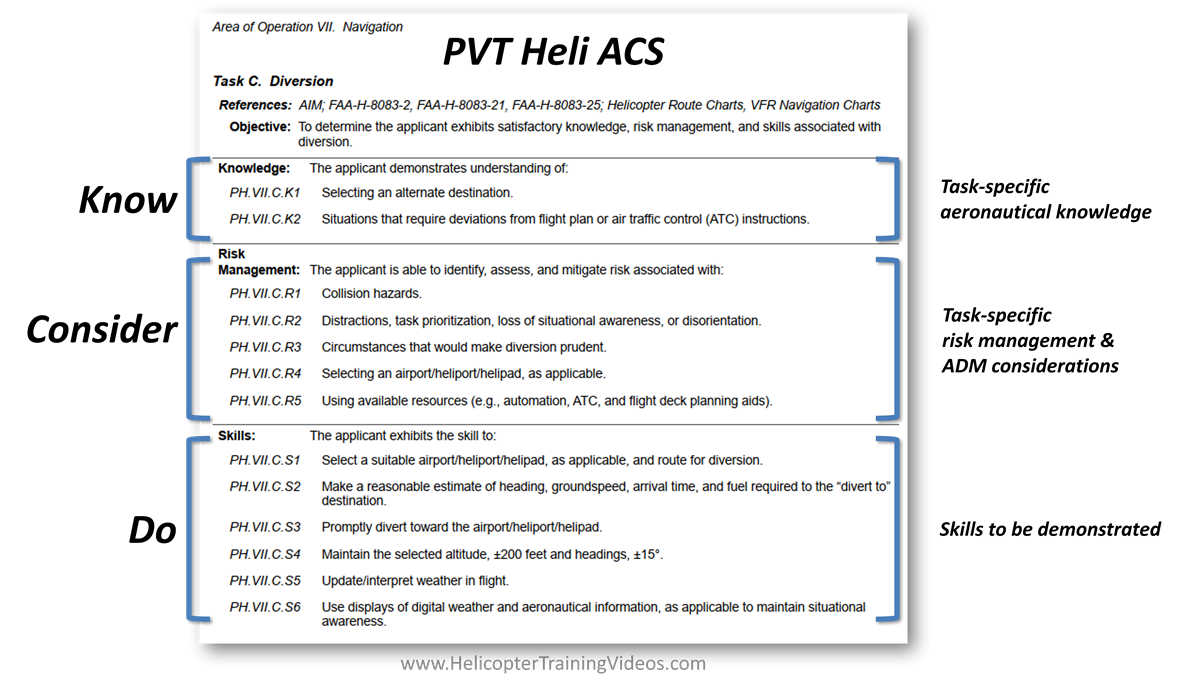
ACS Task Structure
The ACS still has the familiar Areas of Operation and Tasks. But, compared to the PTS, the ACS tasks have updated references, long task notes are moved to appendices, task-specific knowledge and risk management elements have been added, and updates added to skill elements. The introduction of a new coding system facilitates the alignment of knowledge and practical test standards.
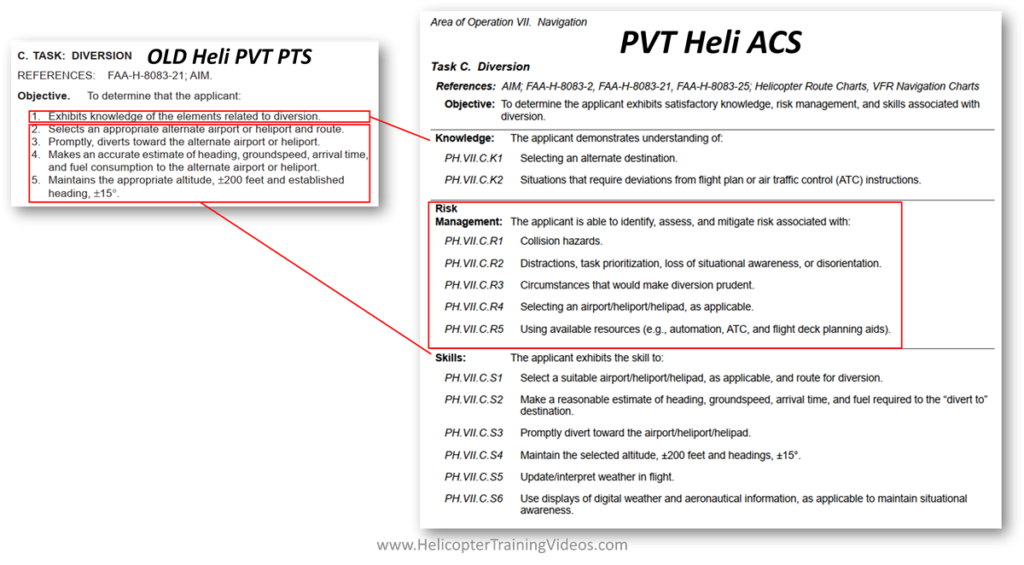
The new ACS have a lot more detail of what is required, resulting in what appear as longer tasks. The checkride might actually be shorter than PTS checkrides (see below), but the ACS gives a lot more guidance. All that extra guidance require a bigger page format and longer document.
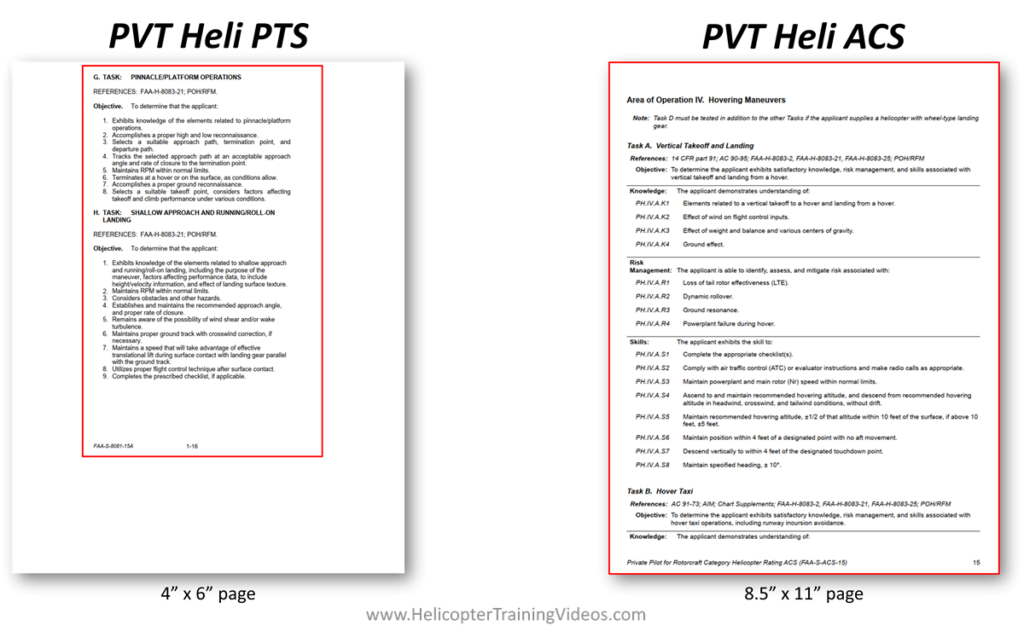
ACS Coding System
A key feature of the ACS overhaul is the introduction of a new coding system, which replaces the old vague PLT codes in the Airman Knowledge Test Report. This system helps identify specific areas of weakness for study or training and also clearly identifies elements applicants will be assessed on during the practical test.
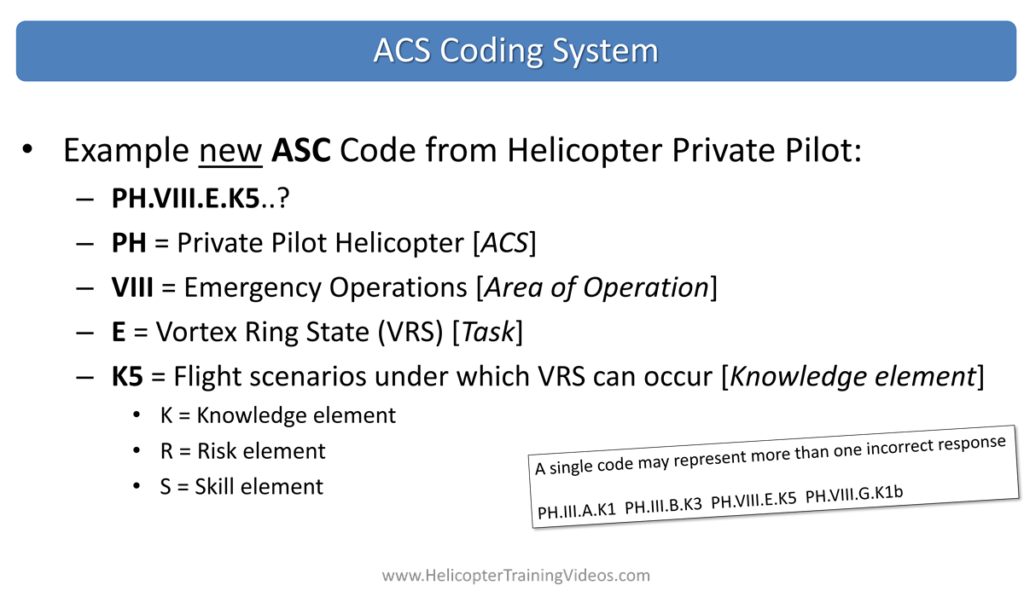
Required Elements
Each task in the ACS is required to include at least one knowledge element, one risk element, and all skill elements. Additionally, any missed ACS codes in the Knowledge Test Report will be required items but can count as the required knowledge or risk elements as applicable. A higher knowledge test score could potentially lead to a shorter ground evaluation. But just like the PTS, the evaluator has discretion to sample as needed to ensure the applicant’s mastery of that Task. An apparent area of weakness often leads to further questioning.
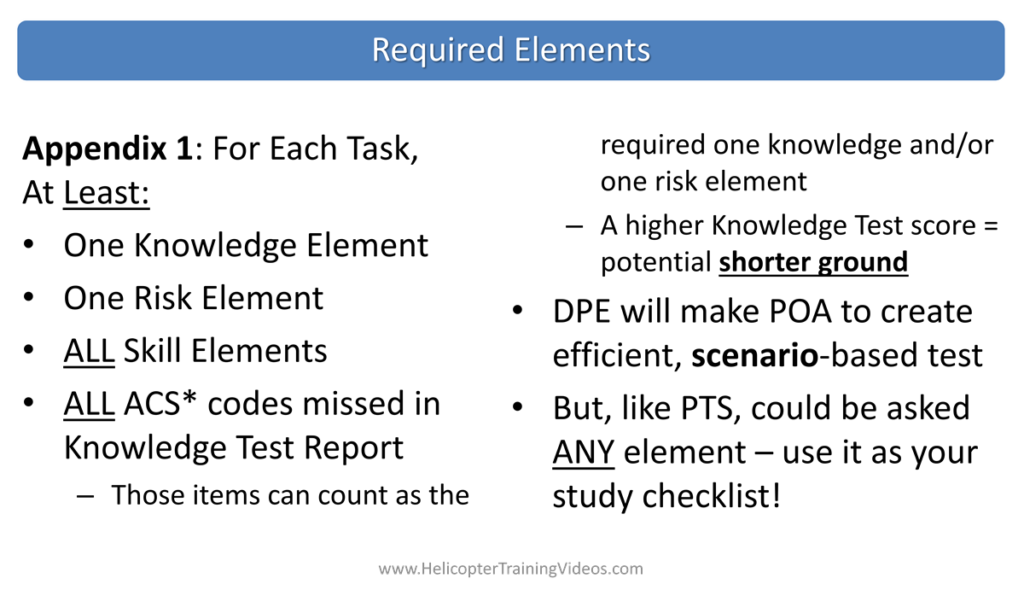
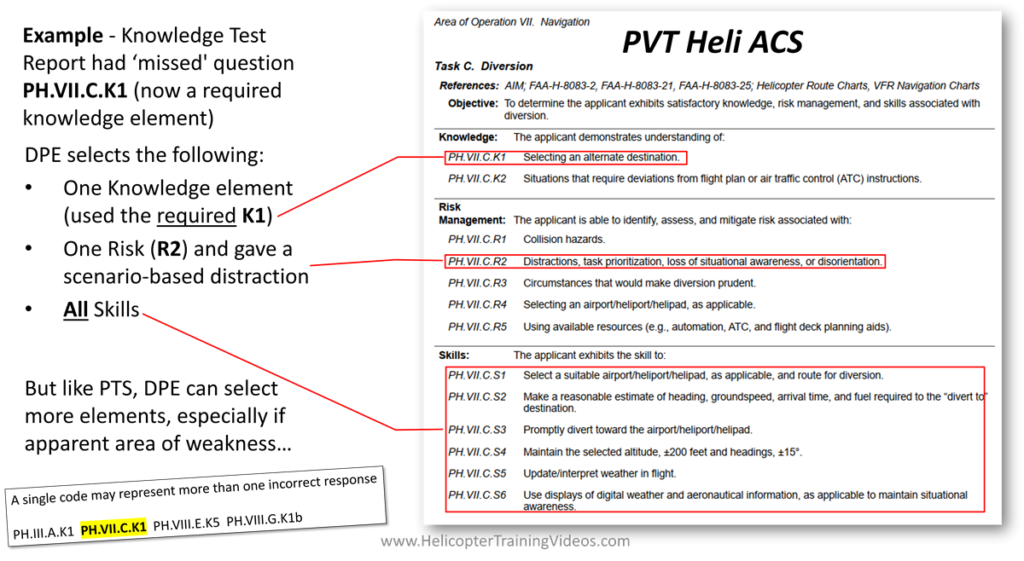
ACS Document Structure
Introductory content, references list, abbreviations and lengthy task notes are now consolidated into the following:
- Appendix 1 – Practical Test Roles, Responsibilities & Outcomes
- Appendix 2 – Safety of Flight
- Appendix 3 – Aircraft, Equipment & Operational Requirements & Limitations
- ACS Companion Guide for Pilots (separate document)
All the appendices and ACS Companion Guide for Pilots really are required reading! Full details of what has moved where can be seen in the Heli ACS video series.

The new ACS have hyperlinked table of contents and have updated the references for each task.
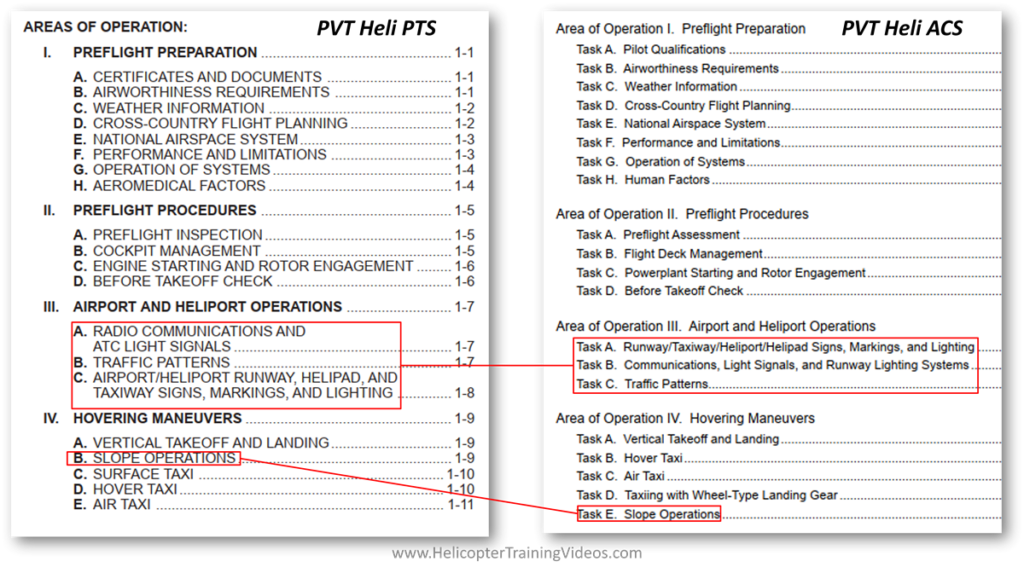
Some tasks have been renamed and some tasks have been reordered. Mostly there are no new tasks, but one prominent exception is the introduction of some new ‘hood time’ on the commercial and CFI PTS. More details in the ‘deep dive’ of each rating in the Heli ACS video series.
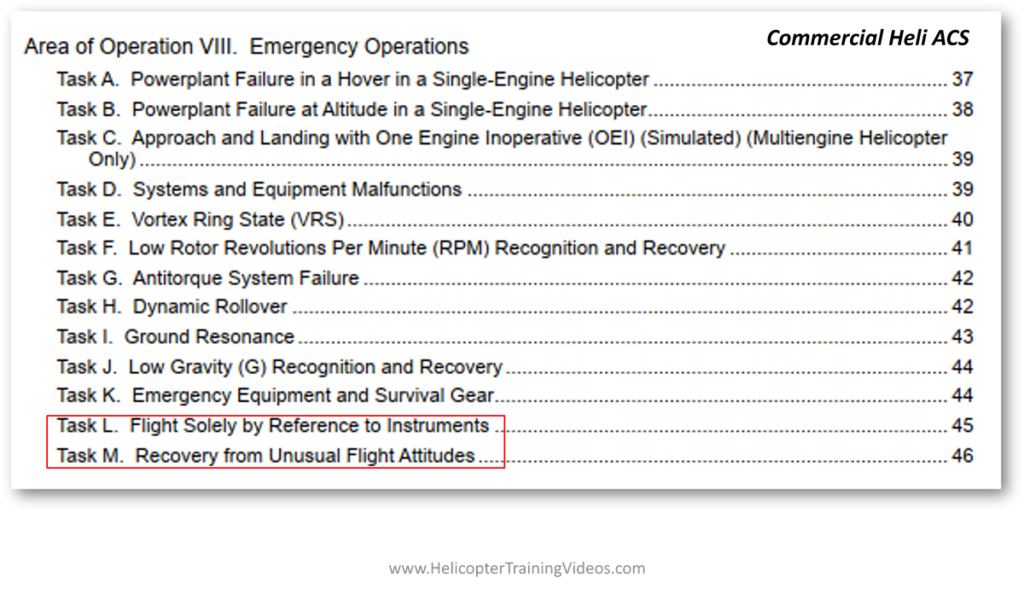
Special Emphasis Areas & ADM
The ACS now integrates risk management elements into every task, replacing the separate and vague Special Emphasis Areas list and ADM items at the start of the PTS.
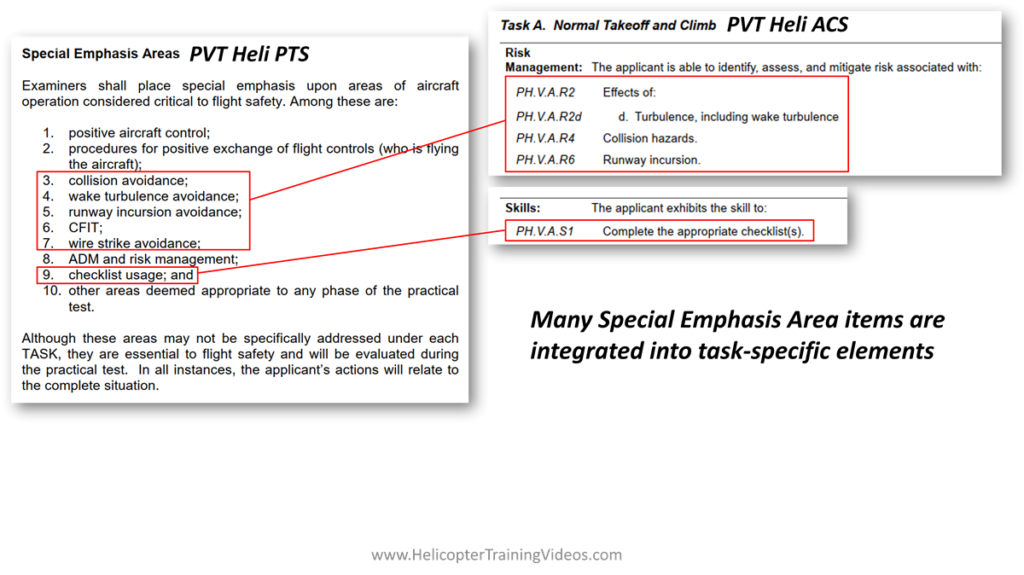
Specific ADM considerations are also addressed in the ACS appendices. Again, full details can be seen in the Heli ACS video series.
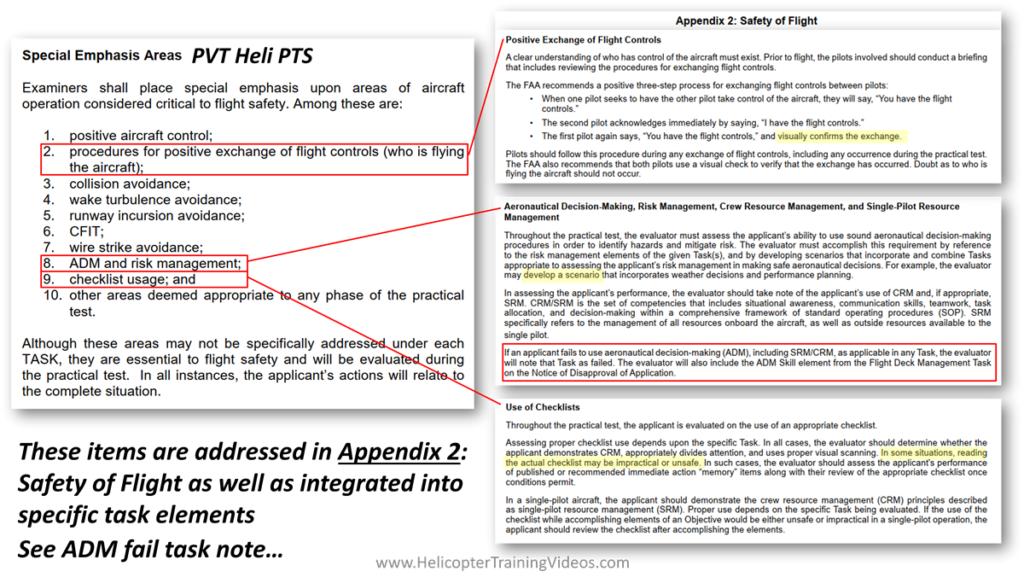
New Technologies
The ACS acknowledges advancements in aviation technology, with elements referencing Electronic Flight Bags (EFBs) and cockpit inflight weather updates. It also removes outdated weather product requirements and adds new graphical weather products.
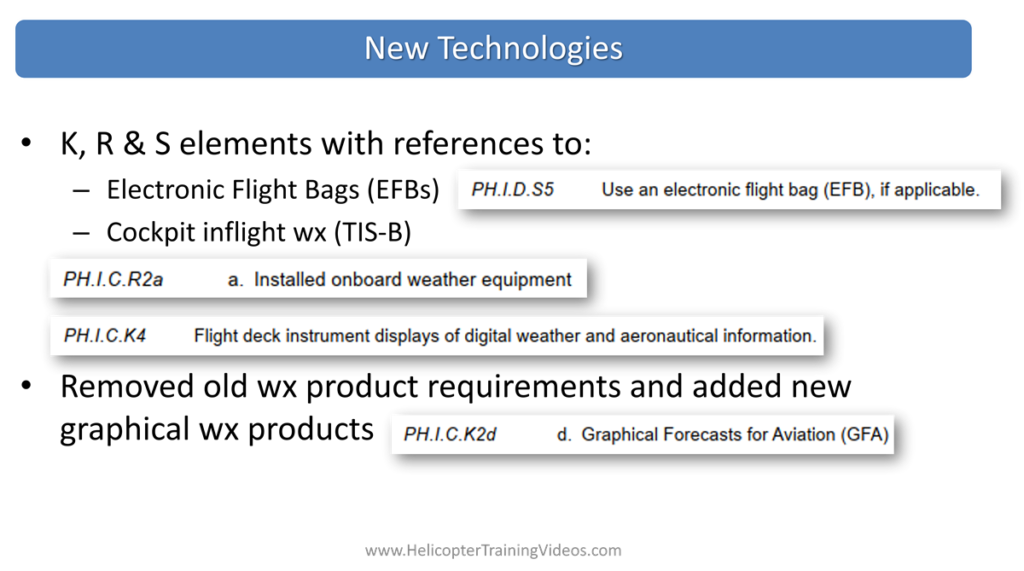
Updated References
Old references are removed, and new references are added, with the full list relocated to the ACS Companion Guide for Pilots.
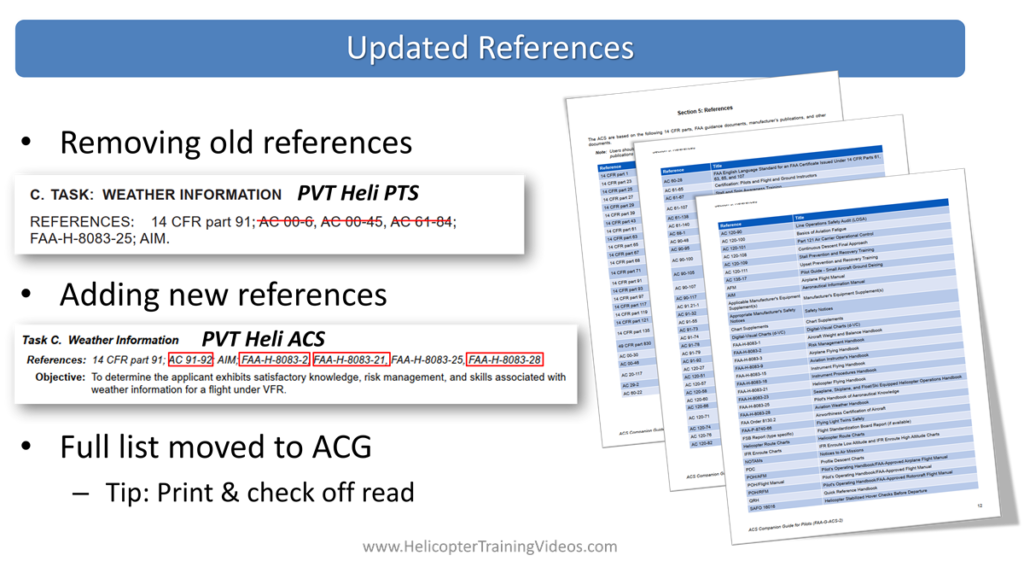
Additional Rating Tables
Some of the changes to additional rating tables include adding a legend, combining category/class, and adding powered lift (PL). There are also numerous changes to the tasks required – more details in the Heli ACS video series.
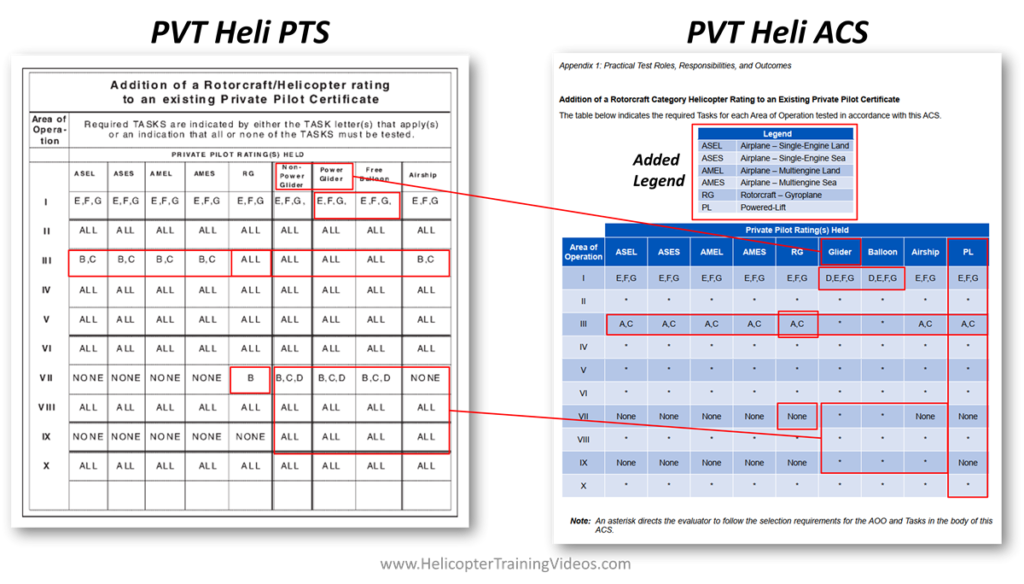
Deep Dive Articles/Videos
Future ACS articles/videos will provide a detailed comparison of changes and delve into each specific ACS, highlighting removed, changed, and new tasks, as well as updates objective standards and knowledge, risk, and skill elements. Start with the Helicopter Private Pilot ACS Big Changes video.
Tips for Students
Students are encouraged to utilize the ACS as a checklist for required knowledge, risk management, and skills before knowledge and practical tests. Reading the ACS appendices and ACS Companion Guide for Pilots thoroughly is recommended, along with aiming for excellence in knowledge tests to streamline checkrides.

More Info
To learn more about the change from Helicopter PTS to ACS, check out the following:
- Helicopter ACS General Changes Video and article
- Helicopter ACS Playlist (Full Details for PVT, COM, INST & CFI Changes)
- FAA Airmen Certification Standards
- ACS Companion Guide for Pilots (Nov 2023)
- Short WINGS course on ACS
- LSR (PTS) Codes List
- ACS Tips for Evaluators (includes SBT ideas)
If you want to purchase the paper versions below are Amazon affiliate links that help support HTV. Paper versions also come with the ACS Companion Guide for Pilots (FAA-G-ACS-2).
DISCLAIMER – make sure you are fully informed on the latest regulations and their application.
For official guidance on laws and regulations, refer to your Certified Flight Instructor (CFI) or local Flight Standards District Office (FSDO) . Helicopter Training Videos aims to promote aviation knowledge and safety but makes no guarantees regarding accuracy or legal applications.
Feedback
What big changes have you seen? Let us know using the comments form below:









